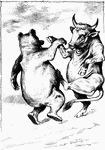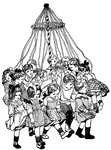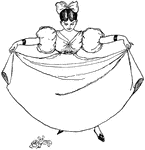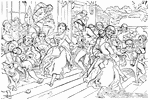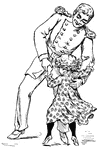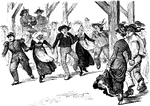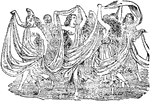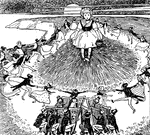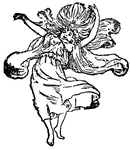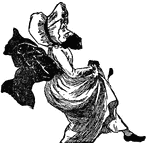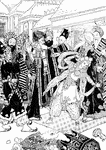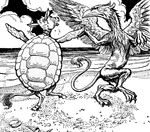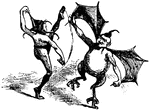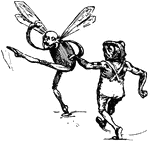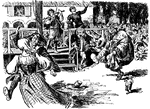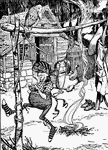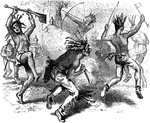Dance
The Dance ClipArt gallery offers 47 illustrations of people (and even some animals) dancing.

The Daughter of Herodias Dancing Before Herod
This painting is by Giotto. It is fresco with many different levels. It can be found in the Peruzzi…

Cat and Dancing Dogs
A cat sitting solemnly as dogs dance down the hallway, in the story "How Cats Came to Purr."

Civil War Musical Entertainment
"Extempore musical and terpischorean entertainment at the United States arsenal, Baton Rouge, La., under…
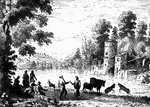
Dance by the Riverside
This painting by Claude Gelle Le Lorrain is a great example of his technique. He uses the rustic, rural…

Elves and Fairies Dancing
According to Norse mythology, in Elfland, elves and fairies would dance in a circle in the moonlight.…

King & Queen Dancing with Group of People
An illustration of a king and queen holding hands and dancing with a large group of people.
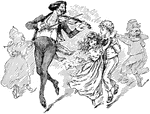
Man Playing Violin with Children Dancing
An illustration of a man playing a violin while children were dancing.
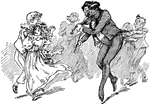
Man Playing Violin with Children Dancing
An illustration of a man playing the violin while children dance around.

May Day Celebration
An illustration of a May day celebration. May Day occurs on May 1 and refers to any of several public…
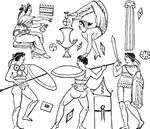
Pyrrhic Dance
"The most famous of all the war-dances of antiquity, is said to have received its name from one Pyrrichos,…

Salatio
"Dancing. The dancing of the Greeks as well as of the Romans had very little in common with the exercise…
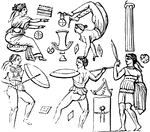
Salatio
"Dancing. The dancing of the Greeks as well as of the Romans had very little in common with the exercise…
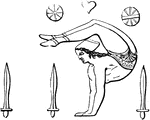
Salatio
"Dancing. The dancing of the Greeks as well as of the Romans had very little in common with the exercise…

Thanksgiving Ball
"Soldiers and women participating in a Thanksgiving Ball. Thanksgiving festivities at Fort Pulaski,…

Tom, Tom, The Piper's Son
He met Old Dame Trot with a basket of eggs. He used his pipe and she used her legs.

Tom, Tom, The Piper's Son
And as Dolly was milking her cow one day, Tom took out his pipe and began for to play. So Doll and the…

War Dance
"Camp life in the West. During one of the pauses in the active part of the Missouri campaign our special…


